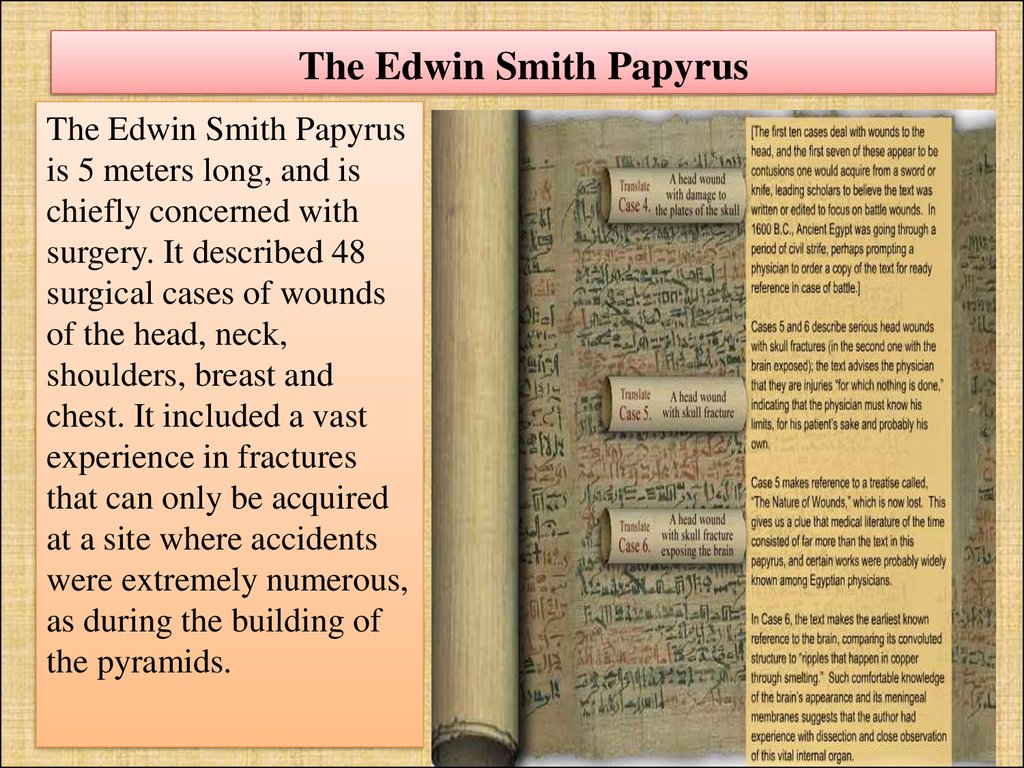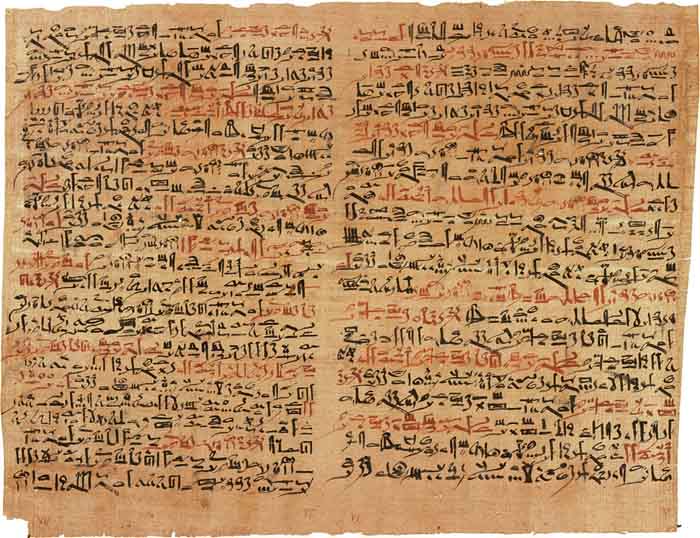

The rational and practical nature of the papyrus is illustrated in 48 case histories, which are listed according to each organ. The text is attributed by some to Imhotep, an architect, high priest, and physician of the Old Kingdom, 3000–2500 BCE.

It is believed that the papyrus is an incomplete copy of an older reference manuscript from the Old Kingdom, evidenced by archaic grammar, terminology, form and commentary. The papyrus ends abruptly in the middle of a line, without any inclusion of an author. The majority of the papyrus was written by one scribe, with only small sections copied by a second scribe. Generic spells and incantations may have been used as a last resort in terminal cases.Īuthorship of the Edwin Smith Papyrus is debated. The spells of the verso side and two incidents in Case 8 and Case 9 are the exceptions to the practical nature of this medical text.

The verso side consists of eight magic spells and five prescriptions. Each case details the type of the injury, examination of the patient, diagnosis and prognosis, and treatment. On the recto side, there are 48 cases of injury. The vast majority of the papyrus is concerned with trauma and surgery, with short sections on gynaecology and cosmetics on the verso. It is written right-to-left in hieratic, the Egyptian cursive form of hieroglyphs, in black ink with explanatory glosses in red ink. Aside from the fragmentary outer column of the scroll, the remainder of the papyrus is intact, although it was cut into one-column pages some time in the 20th century. The recto (front side) has 377 lines in 17 columns, while the verso (backside) has 92 lines in five columns. Other ancient medical texts had been recovered from Egypt, but they contain a glorious mixture of spells and natural remedies for various illnesses and ailments – reason and enigma existing side-by-side.The Edwin Smith papyrus is a scroll 4.68 meters or 15.3 feet in length. When Edwin Smith bought it, he probably did not know that this remarkable document represented the first record of a largely scientific approach to medicine. Rumour and conjecture surround the transaction, with reports that this was a work written by the legendary Imhotep himself, taken from the tomb of a physician in Thebes. Whatever the truth might have been, Smith can be credited with rescuing an invaluable medical papyrus from likely obscurity.ĭuring his time in Luxor in 1862, an Egyptian merchant by the name of Mustafa Agha offered for sale a mysterious fifteen-foot-long scroll. Smith was alternately described as a money lender and forger of antiquities, or as an adventurer with a unique and impressive knowledge of Egyptian hieratic. It is a map of the journey a soul must take after death, providing the newly deceased with spells and guidance to make it to their ultimate destination.īorn in Bridgeport, Connecticut in 1822, the American businessman found his way to Egypt during the American Civil War, where he lived for over twenty years. Vibrantly illustrated are infamous scenes of Anubis weighing the dead’s heart against the feather of Truth, with the monster Ammit lying in wait with flashing eyes and snapping jaws to devour anyone found wanting. The most famous of Egypt’s ancient funerary texts is the Book of the Dead: a hellish guide to navigating the underworld.
Egyptian edwin smith papyrus how to#
When the mysterious Edwin Smith Papyrus was finally translated, less than a hundred years ago, it was found to describe the first recorded nasal reconstruction, how to deal with facial fractures and gaping facial wounds, as well as basic techniques in trauma and trauma surgery.Įgypt has always been associated with magic and mystery.

You could argue that the story of plastic surgery starts in the ancient Egypt. I’ve always had a love of ancient history and Egypt holds a special place in my heart, which is why I find the story of the Edwin Smith Papyrus so fascinating. The history of aesthetic medicine is firmly ensconced in the history of plastic surgery, and the story plastic surgery itself is endlessly fascinating - beginning in the ancient world and blossoming in the wake of two bloody and horrific world wars.


 0 kommentar(er)
0 kommentar(er)
